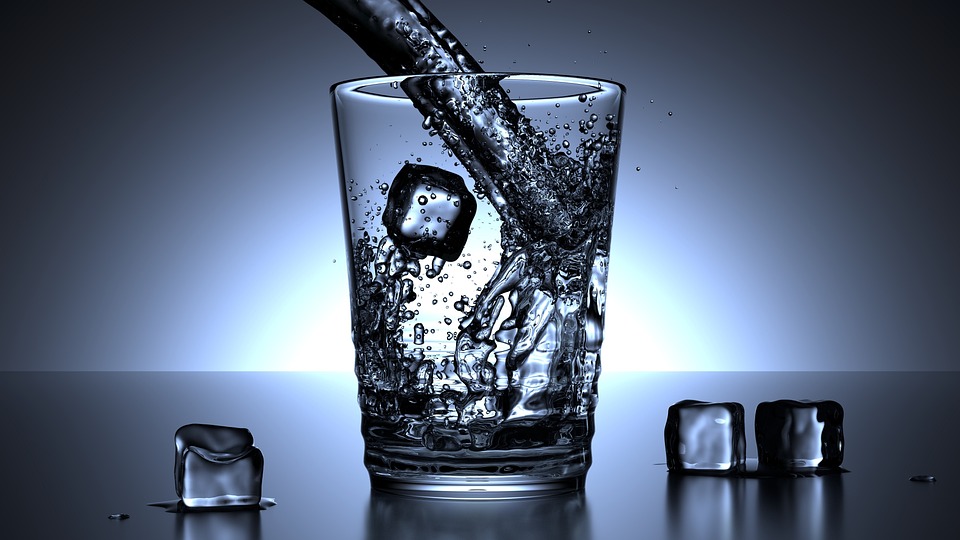A cup of hot tea at 80°C placed in a 20°C room reaches thermal equilibrium when both the tea and surrounding air stabilize at a mid-range temperature, say 25°C, due to heat transfer. This follows the Zeroth Law of Thermodynamics, where if two systems are in thermal equilibrium with a third, they are in equilibrium with each other. The rate of heat exchange is proportional to the temperature difference, as per Fourier’s law of heat conduction.
- Surrounding air molecules
- Hot water in a thermos flask
- Hot coffee in the cup
- Automobile engines
- Electronic devices
- Products kept in the fridge
- Marbles holding in the hand
- Ice in a glass of water
- Melting of ice-cream
- Butter melting
- Glaciers in the sea
- Measuring body temperature with a thermometer
- Human body
- The hand kept on a cold rail
- Entering a room of certain temperature
- Mixing hot and the cold water
Surrounding air molecules
The surrounding air molecules are convenient thermal equilibrium examples because the air molecule attains the temperature same as the surrounding temperature and is in equilibrium with nature. The surrounding temperature is transferred to the air molecule to balance the temperature.
Hot water in a thermos flask
Thermos flasks are isolated systems, so there will be no flow of heat out of the system. This is one of the good thermal equilibrium examples when the hot water is poured into the flasks. The temperature of the water is transferred to the flasks; thus, the equilibrium is established between the flasks and the water. When you open the lid of the flasks, the stream of water rushes out is because of the balance of thermal equilibrium.

Hot coffee in the cup
If you pour a hot coffee into the cold cup, the cup becomes hot same as the coffee. The hotness of the coffee is transferred to the cup; thus, the coffee is in equilibrium with respect to the cup by transferring its temperature to the cup.

Read more on Stable equilibrium
Automobile engines
When automobiles are driven for a long time, the engine gets heated. As the automobile is retard from the motion and is under a stationary state, after some time, the engine cools down, and its temperature becomes equal to the surrounding temperature; thus, the state of equilibrium is attained by the engine with respect to the surrounding temperature.
Electronic devices
All electronic devices heated up while running. This heat is not permanent. The devices cool down after some time to be in equilibrium with the surrounding environment, thus satisfying the thermal equilibrium condition.
Products kept in the fridge.
If you keep any product overnight inside the refrigerator, it becomes cool. In this case, the coldness of the refrigerator is making the product cool. Thus the temperature of the refrigerator and the product will be the same. Hence the thermal equilibrium is generated between the refrigerator and the product.

Marbles holding in the hand
If you hold any marble for a long time, the temperature of your hand and the marble will be equal. This can be well defined as the marble is in thermal equilibrium with the hand as the temperature of the hand is transferred to the marble until it becomes equal. Thus holding a marble in hand is one of the best thermal equilibrium examples.
Read more on Dynamic equilibrium of a system
Ice in a glass of water
Take a glass of water at room temperature and put some ice cubes in the same water. The ice gradually melts by exchanging its temperature with water. The exchange of the temperature between the water and the ice cubes takes place until both water and ice attain the same temperature, thus satisfying the equilibrium condition.

Melting of ice-cream
If you keep the ice cream out of the refrigerator for some time, it interacts with the surroundings, and a transfer of heat will occur. The ice cream melts until its temperature matches the surrounding temperature. Thus ice cream will be in equilibrium with the surrounding satisfying the thermal equilibrium.

Butter melting
Butters are very sensitive to temperature. When the butter comes into contact with different temperatures, the butter melts and tries to be in equilibrium with the surrounding. Thus melting the butter is one of the excellent thermal equilibrium examples.
Formation of Glaciers
At the poles, the permanent glaciers in the sea are one of the natural thermal equilibrium examples. Due to global warming, the temperature near the sea increases rapidly; thus, the ice melts, creating glaciers. The glaciers are in thermal equilibrium with the sea near the poles.

Read more on Dynamic equilibrium a diffusion
Measuring body temperature with a thermometer
If you have a fever, you will check your body’s temperature using a thermometer. In this case, your body temperature is transformed to a thermometer consisting of mercury. As the heat is supplied, the mercury begins to rise until your body temperature, and the mercury becomes equal. When both the temperature becomes the same, there will be no transfer of heat from the body, and the rising mercury is also stopped. The point where the mercury has stopped its motion is recorded as your body’s temperature.

When the contact between your body and the thermometer is removed, the mercury begins to move downward and settles at its original position until it reaches zero. In both cases, the mercury is in equilibrium with the given surrounding. Before coming into contact with your body, the thermometer is in balance with the surrounding environment. When it comes to your body contact, the thermal equilibrium is set between the thermometer and your body. Once released from your body contact, the thermometer will attain equilibrium with the surrounding once again.
Human body
The human body, after death, will become cold is due to the thermal equilibrium. There will be a transfer of heat between the body, and the surrounding takes place to balance the temperature. This process takes only for little time after death to achieve thermal equilibrium.
The hand kept on a cold rail.
If you keep your hand on a cold rail, your hands get cold. The coldness of the rail is transferred to your hand to balance the temperature. Once the temperature of your hand and the rail becomes the same, the thermal equilibrium between the rail and hand is achieved.
Read about Dynamic equilibrium vs Static equilibrium
Entering a room of certain temperature
Have you ever entered the AC room? If you have, then you have experienced your body becoming cold or hot depending on the temperature of the AC sets. Your body achieves the same temperature as the AC as you enter the room. Thus thermal equilibrium is set up between you and the room.
Mixing hot and the cold water
When you mix the hot water and the cold water, the hot water transfer its temperature to cold water, and the cold water gives its coldness to the hot water; thus, the exchange of temperature between them take place. This process takes place until no heat is left to exchange; thus, thermal equilibrium is generated.

Read about dynamic equilibrium examples
Also Read:
- Compound pulley examples
- Heterotrophic bacteria examples
- Neutral equilibrium examples
- Double bond examples
- Elastic collision examples
- Molecules active transport examples
- Disulfide bonds examples
- Physical change heat examples
- Radiation heat transfer examples
- Oval shape examples
I am Keerthi K Murthy, I have completed post graduation in Physics, with the specialization in the field of solid state physics. I have always consider physics as a fundamental subject which is connected to our daily life. Being a science student I enjoy exploring new things in physics. As a writer my goal is to reach the readers with the simplified manner through my articles.